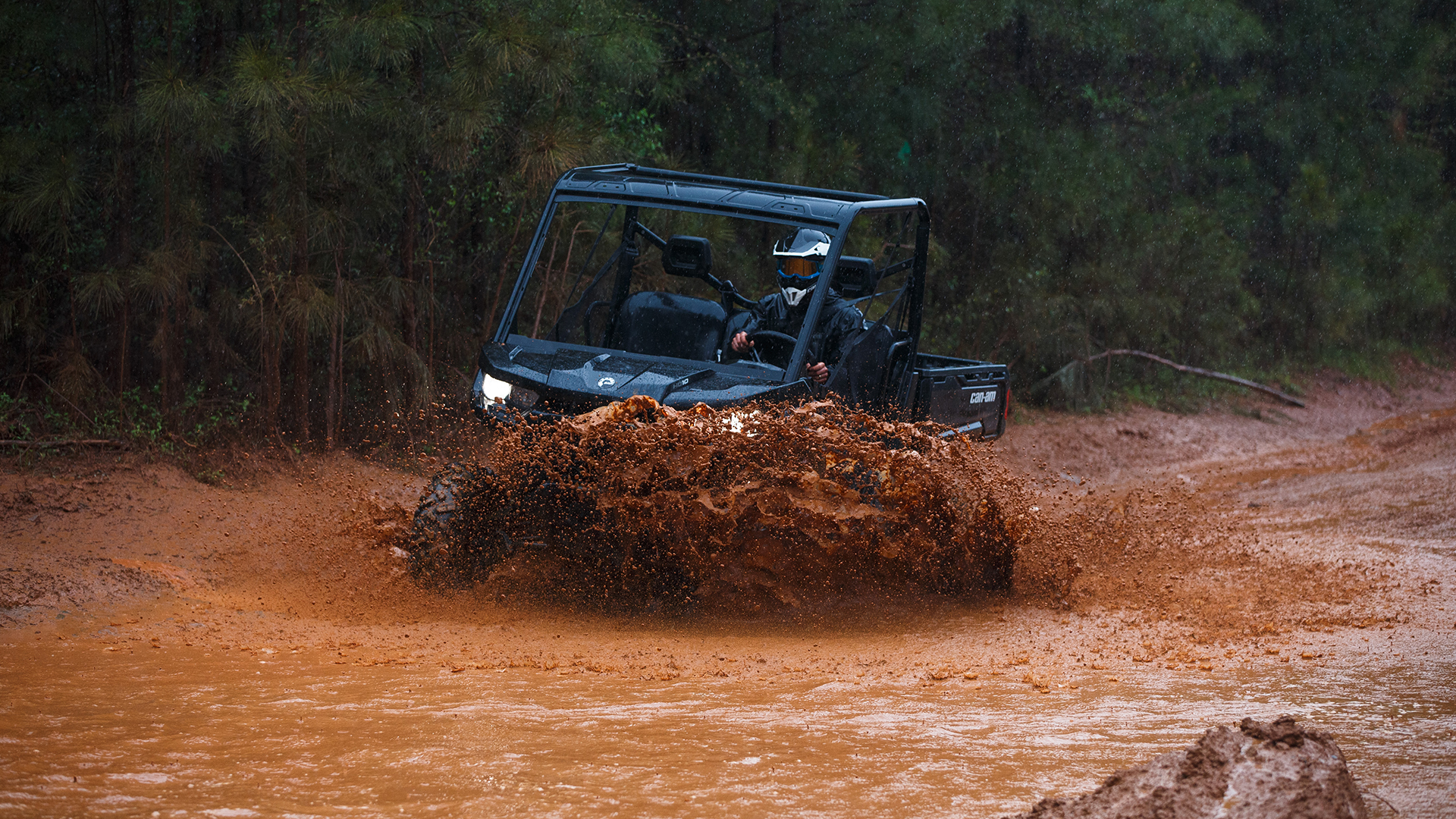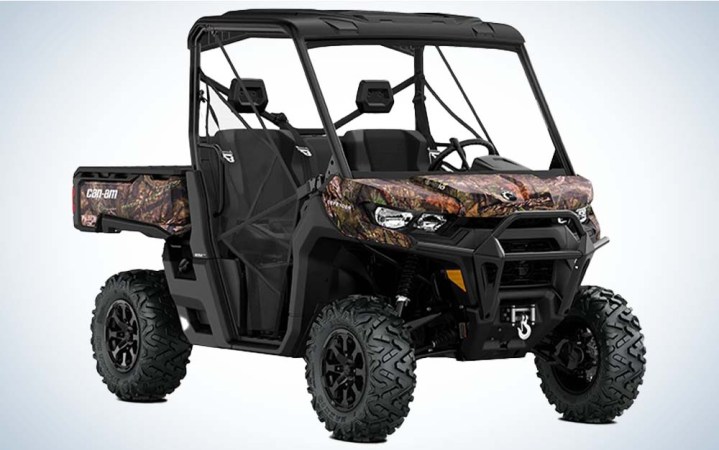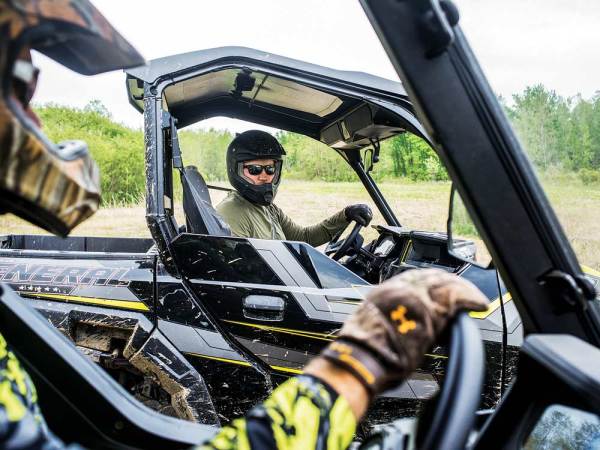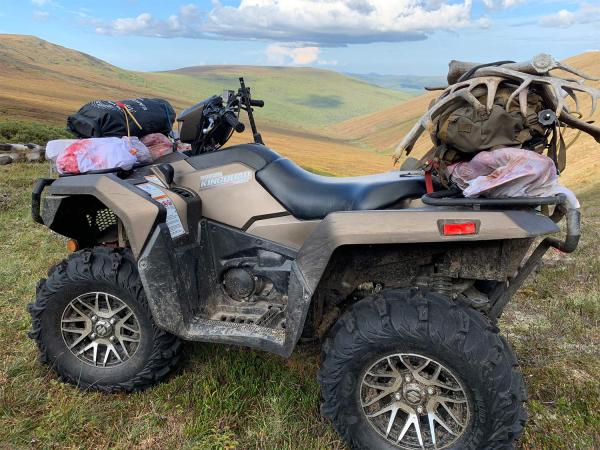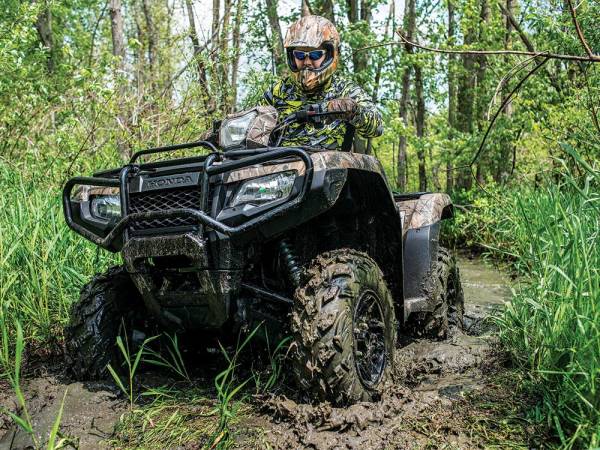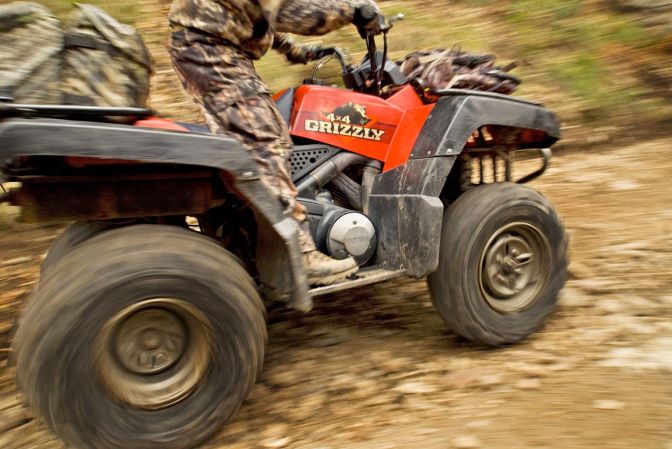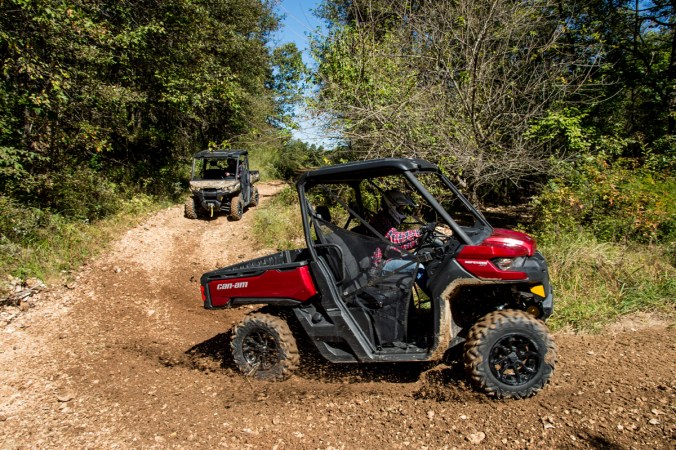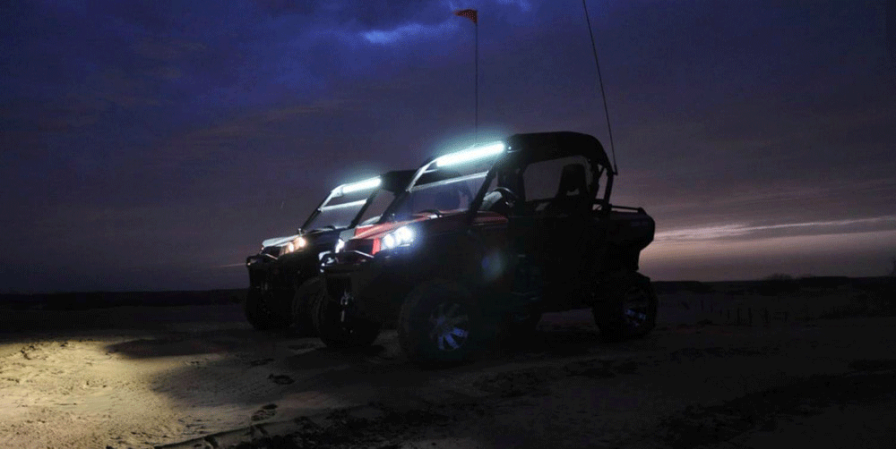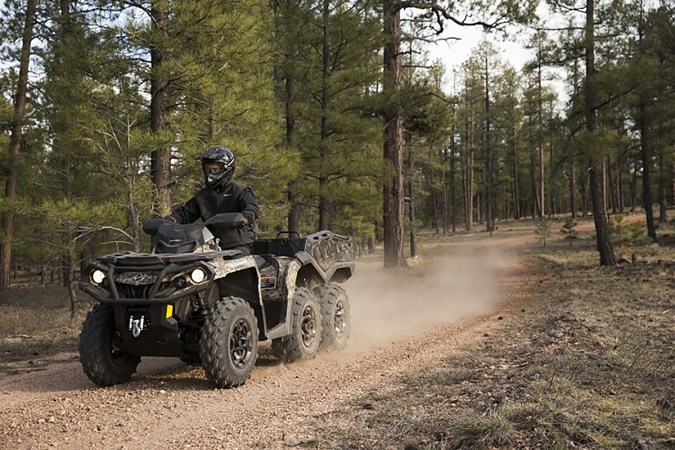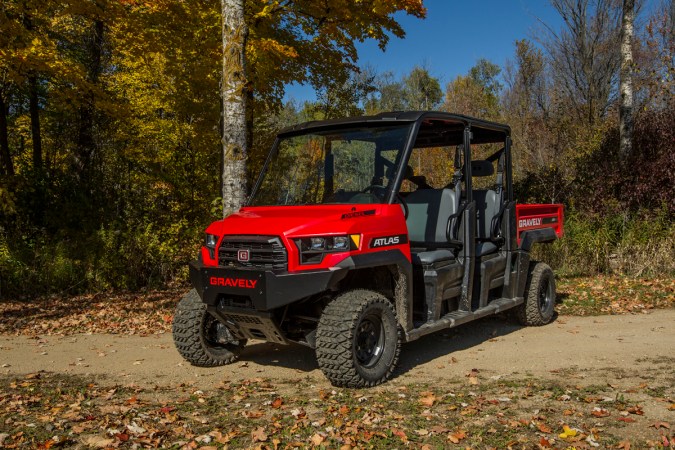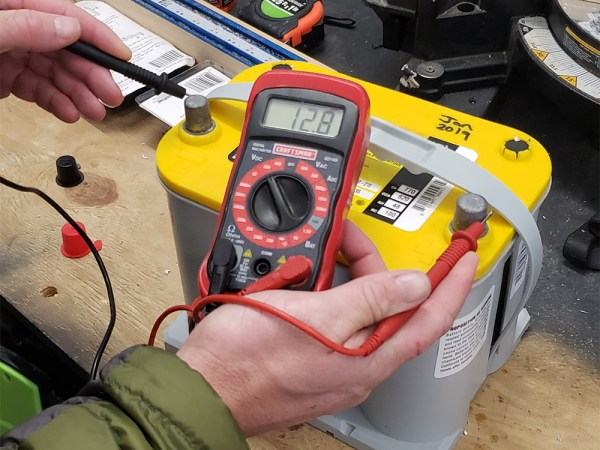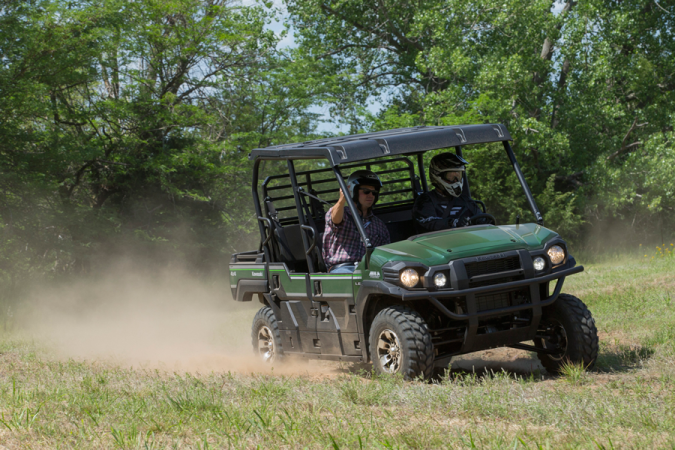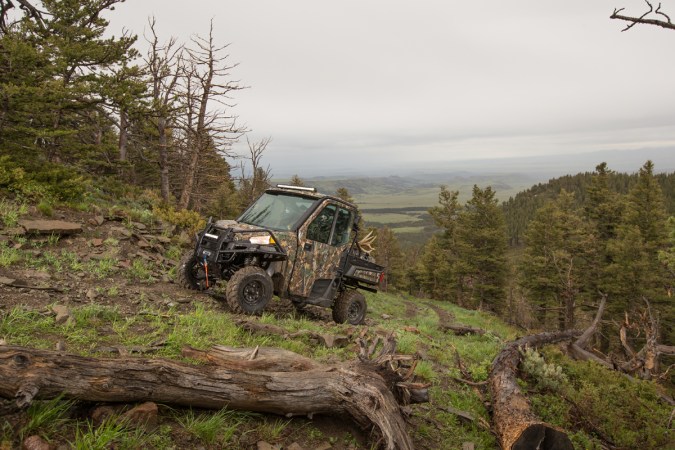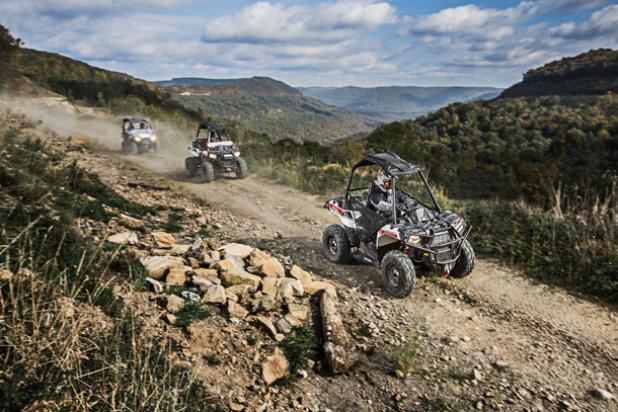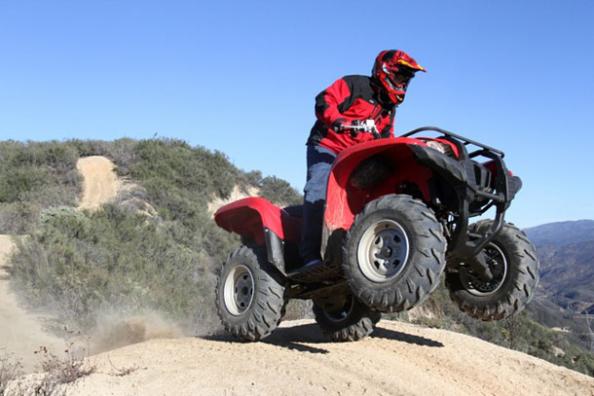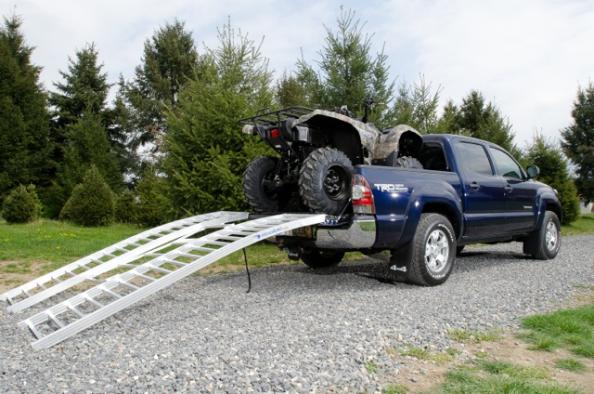We may earn revenue from the products available on this page and participate in affiliate programs. Learn More ›
I recently hit the trails with the Can-Am Maverick and Defender with the goal of determining just how viable the latest side-by-sides are for hunting and fishing. It would have been nice to check trail cameras and to have tried to get one stuck in the swamp this summer to put these machines through their paces. But I only had one day of trail riding, maneuvering over and around obstacles, and running through the Georgia mud to get it done. Fortunately, it doesn’t take too long to get a general idea of how these UTVs will perform in our world.
The day started with an exhilarating drive in Can-Am’s Maverick X3 RS Turbo RR. The machine is an absolute beast, but it’s not practical for hunting and fishing. Although, I suppose if you need to beat other hunters to a prime location, it could work.
Realistically, what you need is something more like Can-Am’s Defender series. The lineup includes 20 different configurations including multiple engines, wheelbases, and levels of refinement. I drove the Defender XT HD10, which presents a compelling value proposition for outdoorsmen in general and hunters in particular. It includes the range-topping engine and ground clearance without all the bells and whistles that put prices out of reach for many people.
UTVs occupy an interesting place in the off-road market. When they first came onto the scene, the idea seemed to some like an awkward middle-ground between nimble ATVs and more capable (and roadworthy) trucks and SUVs. It seems like the skeptics have largely been convinced. According to Global Market Insights, Americans spent $7 billion on new UTVs in 2020 and that figure is expected to surpass $11 billion by 2027. The question is this: should you be one of the customers contributing to that growth?
Can-Am Defender Specs
Can-Am has a robust catalog of off-road vehicles, trim levels, options, and accessories, but we’ll focus on the Defender XT outfitted with the Rotax HD10 engine we drove ourselves.
- Engine: 976cc V-twin
- Power output: 82 horsepower, 69 pound-feet of torque
- Transmission: continuously variable transmission
- Estimated dry weight: 1,600 pounds
- Overall dimensions: 125.7 inches long, 64 inches wide, 80 inches tall
- Ground clearance: 13 inches
- Cargo box dimensions: 38 inches long, 54.5 inches wide, 12 inches deep
- Payload: 1,500 pounds
- Towing capacity: 2,500 pounds
- Fuel capacity: 10.6 gallons
- MSRP: 11,699 (starting)
The Can-Am Defender Is Built to Work
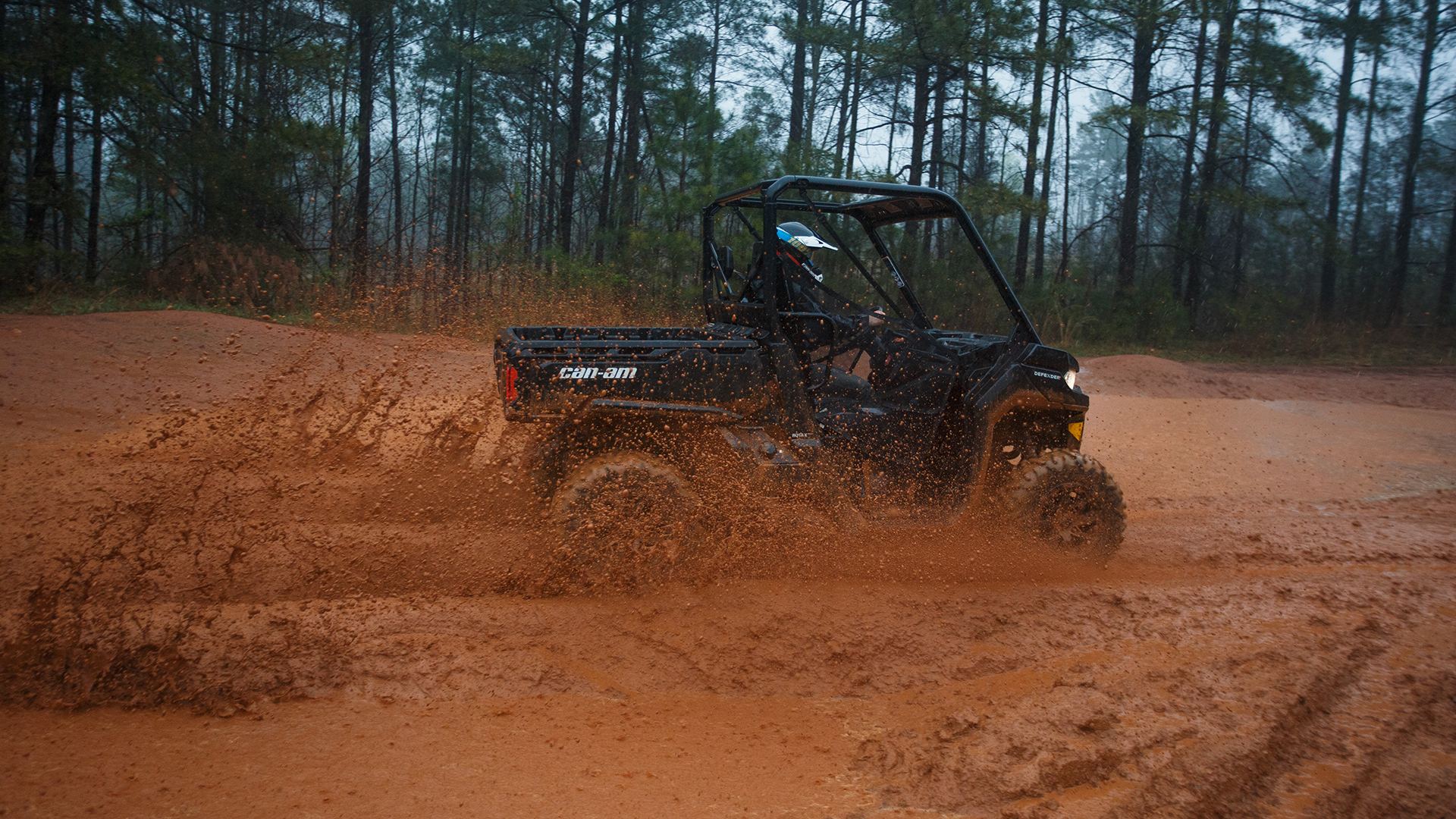
While my drive with the Defender didn’t involve any hard labor, I didn’t have any issues with deep mud and water. I had the Defender belly-deep in red Georgia mud and it paddled through with no hesitation. I know of one journalist who did get stuck, but that may have been an attempt to push the Defender to the breaking point. In any case, it was a great opportunity for the group to see the winch in action as the vehicle was towed to firmer ground. The spec sheet tells the rest of the story, and it’s one that bodes well for hunters who have heavy lifting on the agenda.
Every vehicle on this platform comes with power steering, a 2,500-pound towing capacity, and a cargo box that measures 38 inches long, 54.5 inches wide, and 12 inches deep. Those stats are comparable to what you’d get from other manufacturers. Defender XTs equipped with the HD10 also get reinforced seats that held up well to the torturous rain and mud of our test drive, a skid plate that provides much-appreciated protection on the trail, a 4,500-pound winch, and optional Mossy Oak camouflage.
The 976cc, fuel-injected V-twin produces 82-horsepower and 69 pound-feet of torque. Electronic aids include hill descent control and three drive modes: ECO, ECO Off, and Work. I’m not sure how necessary multiple engine maps are, but it’s a nice option to have that might make life easier depending on whether you’re towing a heavy blind to your favorite hunting spot or trying to make every drop of gas count in the backcountry.
The tailgate can support 250 pounds, so you don’t need to baby it even if it isn’t cut out for you and your buddies to sit on at the end of a workday. The towing and payload capacities are limited compared to a truck or SUV but should be adequate for most off-road purposes short of hauling round bales and actual farming implements. Can-Am advertises seating for three, but the Defender is realistically a two-seater with room for a child in the middle seat.
At 1,600 pounds, the Defender has a markedly reduced impact on the hunting ground itself than a truck or SUV. It’s less likely to dig muddy ruts and crush vegetation. The 83-inch wheelbase is 44 inches shorter than a Ford Ranger; in fact, the entire UTV fits inside the wheelbase of a Toyota Tacoma. You’ll be able to slip in between trees and make tighter turns than you could ever attempt in a road-going vehicle (except for a Samurai). Unlike an ATV, the Defender offers creature comforts like in-dash storage, a removable toolbox, a waterproof storage box under the passenger seat, and cupholders. You can even option a heater, air conditioner, doors, and windshield with a wiper blade.
The Price of Performance
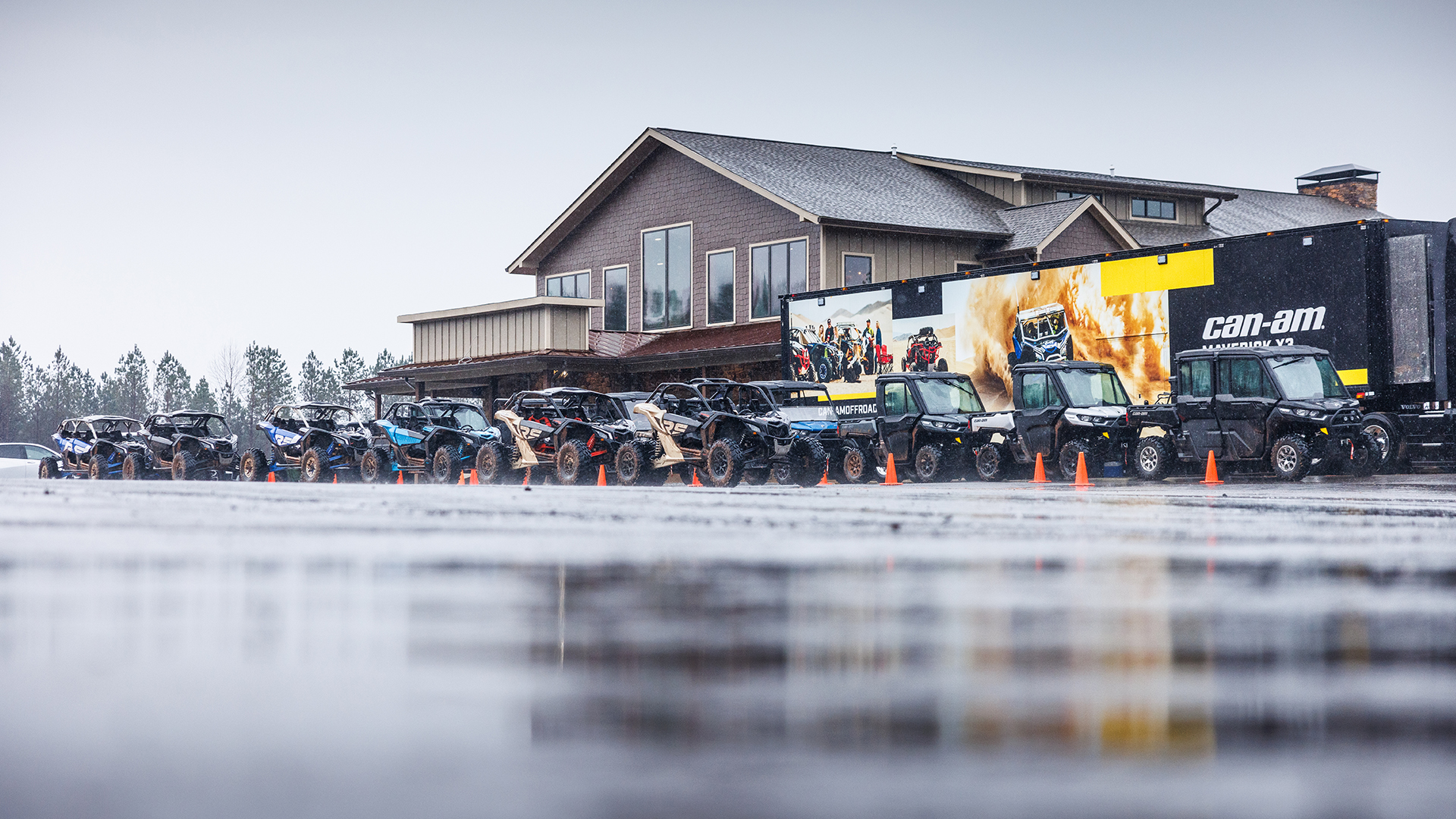
I wish I could have hooked up a trailer or thrown some weight in the back of the Defender I drove, but that wasn’t in the cards. The several miles of trails, dirt roads, and on-pavement driving in some of the heaviest rain I can remember were enough to convince me that there is a place for this UTV.
Is the Can-Am Defender a good buy? To answer that question, think about the specific capabilities you need from your next hunting rig–whatever form that takes. Most of us grew up choosing between pickups and four-wheelers. That’s an easy decision because there’s no overlap. UTVs like the Defender blur that line enough that we need to think a little harder.
A Defender HD10 like the one I tested starts at more than $20,000. That’s without opening the accessory catalog or helping yourself to that glorious Mossy Oak paint job. Spending that much money is a serious decision, and financing your purchase will leave you with a monthly payment similar to what purchasing a car would entail.
Then again, remember what the current car market looks like. The humble Ford Maverick will set you back about $30,000 by the time you outfit it with the off-road features required of most hunting trucks. Prices are on the rise, especially for used cars. The New York Times reports that used car prices rose by 40 percent between 2020 and 2022, so getting that old farm truck for sale down the street won’t be easy. If you are able to afford to purchase a hunting truck for yourself, remember that fuel, parts, and labor have also gotten significantly more expensive during the past year or so. Maybe a low-maintenance, one-liter engine that sips gas isn’t such a frivolous purchase, after all.
Accessories and Personalization
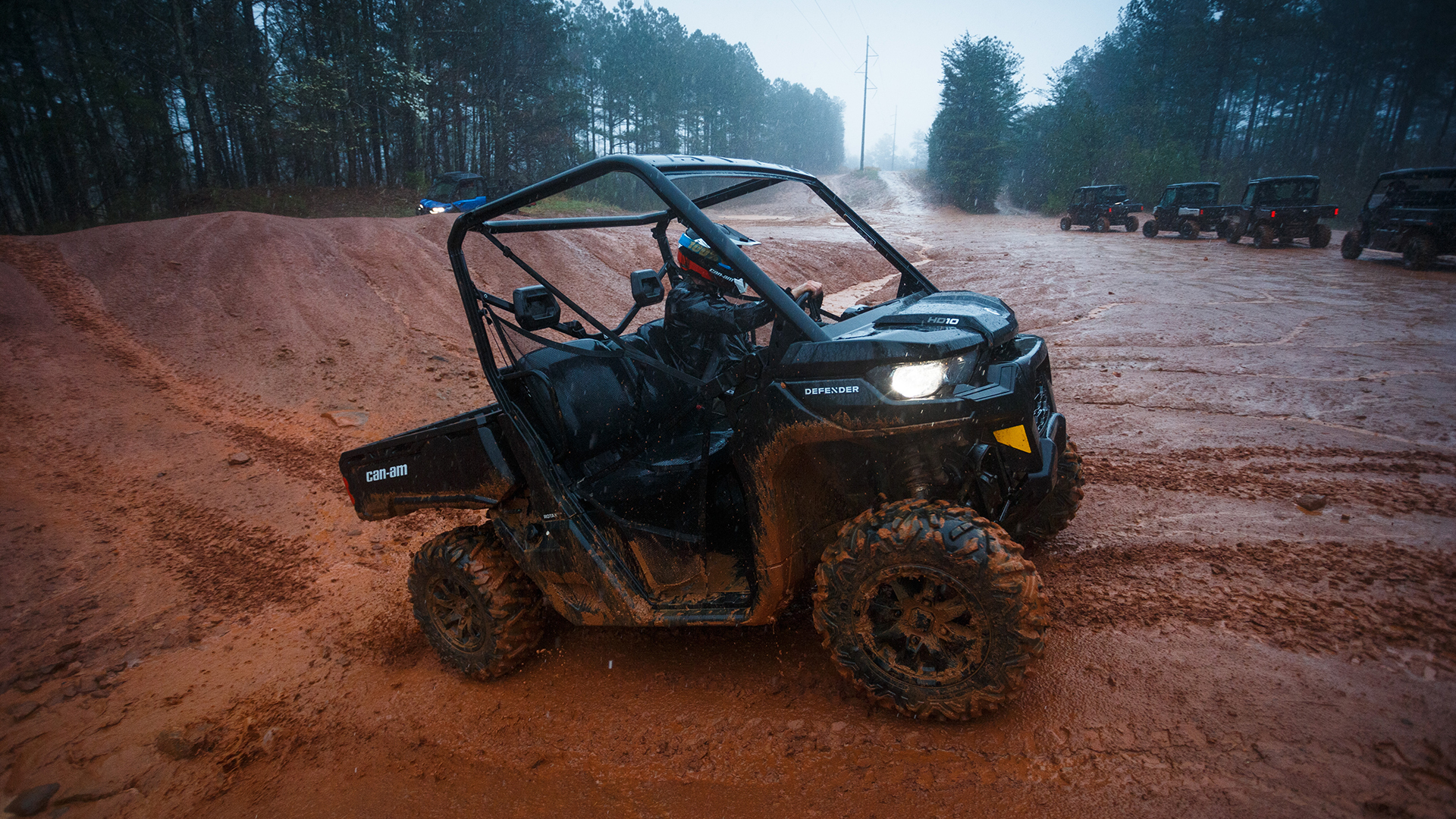
The Defender is a formidable off-road workhorse in its own right, but Can-Am also offers an accessory catalog that makes the platform more versatile and capable. You could easily rack up a hefty bill in the accessory department. There are a few accessories that benefit hunters, in particular.
The first is the optional Mossy Oak camouflage pattern. It costs an extra $300, but it’s an obvious choice for hunters. I’m not suggesting that the HD10 engine is going to slip stealthily through the forest, but it would be nice to park a slightly less conspicuous vehicle when you get where you’re going. The camouflage only covers body panels like the hood and bed, so most of the Defender is still black–including the roof. It’s not exactly a rolling ghillie suit, but it’s better than glossy blue or black.
Another smart upgrade is the cargo bed winch, especially if you hunt solo and need to lift a deer into the bed on your own. If you’re able to pack game animals for miles and enjoy doing so, then more power to you. I’m all for it. But that’s not an option for everyone, and having the ability to drive up to a deer with a nimble side-by-side and have a winch help you get it into the bed could keep hunters in the field who might otherwise have to give up their passion. I’d also recommend a set of optional floodlights for the cargo area. The combination of the lights and winch would seriously increase the Defender’s capacity for work.
The optional snow plow is worth a look for those of you in the snowy north. Clear the driveway or a path to your ice fishing hut without straining your back. If you have enough land to warrant a UTV, having a plow for winter only makes sense. If you plan on using the Defender for plowing or other work, the HD10 engine is a good investment. It inspired confidence during my test drive and, while I’m sure the smaller engines are fine, the HD10 certainly didn’t feel excessive.
Finally, the Deluxe Cab Enclosure package can transform the Defender from a comfort standpoint. I climbed out at the end of the test drive soaked to the bone with my teeth chattering; meanwhile, some of my fellow journalists who had been driving the enclosed vehicles were dry, warm, and discussing the best mix of heat and air conditioning to stay warm without fogging up the glass. They did comment that the cab wasn’t completely waterproof. For the luxury of a hard roof and doors, a glass windshield with a wiper and washer, and rear glass with a sliding window, you’ll need to pay an extra $6,323. That pushes the Defender into truck pricing territory, but it will make sense for some people.
Read Next: 5 of the Best Aftermarket Tires for Your ATV
Who Is the Can-Am Defender For?
For many hunters, the Can-Am Defender is a bridge too far. If you don’t have land of your own or live in an area where UTVs aren’t allowed on public roads, it’s not a viable hunting option.
On the other hand, if you have access to either of those things it makes a whole lot of sense. It’ll happily cruise down a paved road if need be, slip between trees, and haul your tools, gear, and harvest. Maintenance and repairs are sure to be a tiny fraction of what you’d spend to maintain a truck or SUV. Besides, it has a ton of potential for handling other kinds of jobs that anyone with acreage could benefit from.
If you are in the position to buy a Defender, you’re almost certainly cross-shopping it with competitors from Polaris, Yamaha, Honda, and Kawasaki. Without a back-to-back comparison, I’m not going to make a recommendation on one brand over another. Everyone’s priorities and needs are different, so you should try to get some seat time if you’re unsure which one is best for you. If nothing else, consider which brand has better dealer support in your immediate area.
